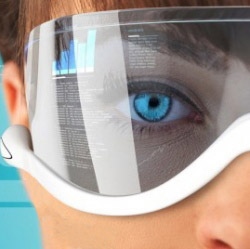
In the next few weeks, Google will start shipping its Google Glass to developers. More-polished consumer models are expected in 2014.
Details about Glass are still sketchy but here’s what we know:
The lightweight browband, which looks like an ordinary pair of reading glasses minus the lenses, connects to an earpiece that has much the same electronics you’d find in an Android phone: a microprocessor, a memory chip, a battery, a speaker, two microphones, a video camera, a Wi-Fi antenna, Bluetooth, an accelerometer, a gyroscope, and a compass. The microdisplay is positioned over one eye.
That hardware lets Glass record its wearer’s conversations and surroundings and store those recordings in the cloud; respond to voice commands, finger taps, and swipes on an earpiece that doubles as a touch pad; and automatically take pictures every 10 seconds. Prototypes connect to the Internet through Wi-Fi or through Bluetooth and a smartphone. Future versions will likely include a cellular antenna.
Glass will run apps like Google+ and Google Search, but it’s designed to feel more natural and immersive than a PC or a smartphone. Ideally, Babak Parviz, the leader of Project Glass, told developers at the company’s Google I/O conference in June, it will let you access information “so fast that you feel you know it.”
